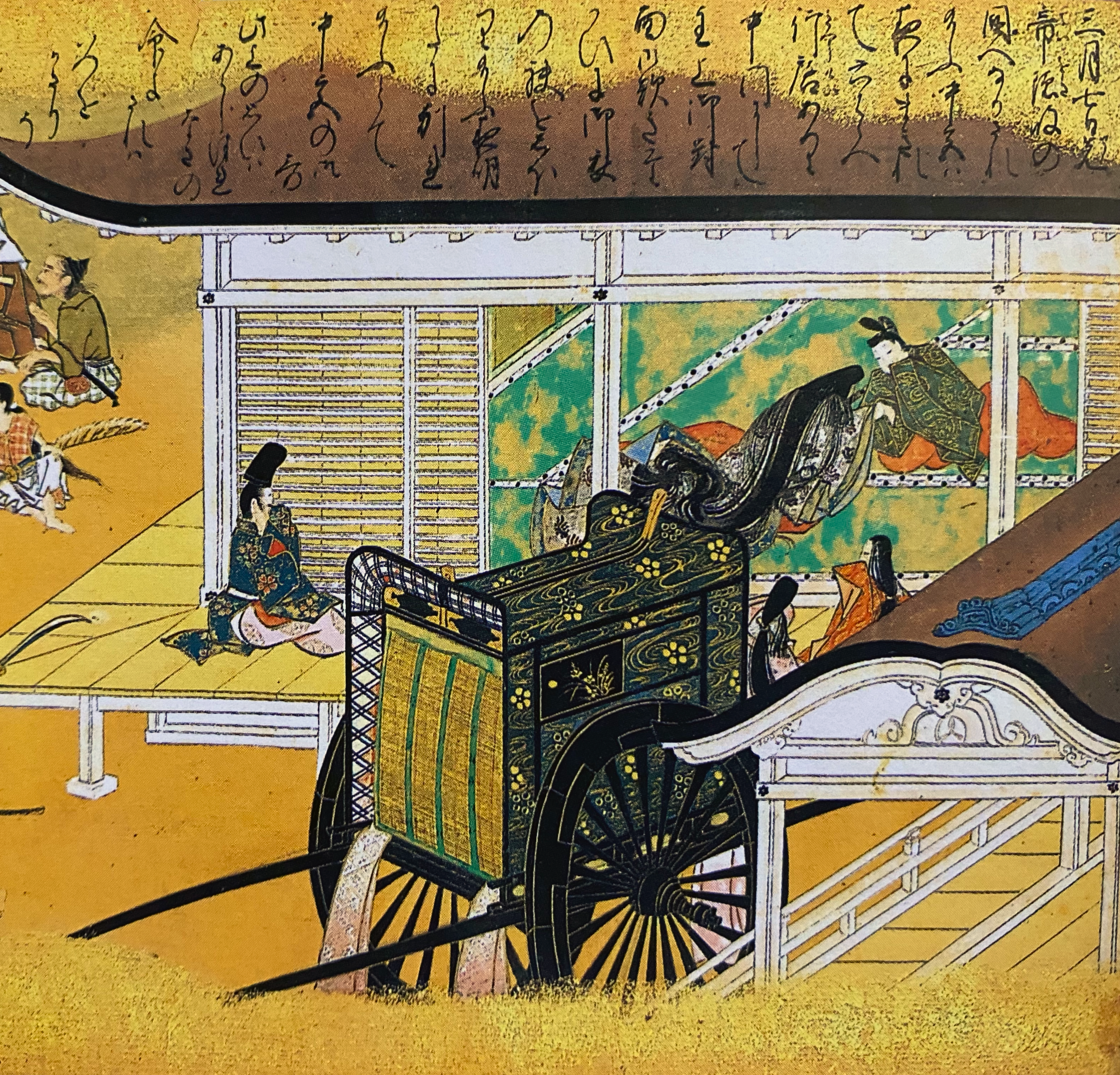Saionji Kishi on:
[Wikipedia]
[Google]
[Amazon]
, or more formally , was an Empress consort of Japan. She was the consort of
 She was born as the 3rd daughter of Saionji Sanekane (西園寺実兼). She
She was born as the 3rd daughter of Saionji Sanekane (西園寺実兼). She
Emperor Go-Daigo
Emperor Go-Daigo (後醍醐天皇 ''Go-Daigo-tennō'') (26 November 1288 – 19 September 1339) was the 96th emperor of Japan, Imperial Household Agency (''Kunaichō'')後醍醐天皇 (96) retrieved 2013-8-28. according to the traditional order ...
of Japan.Mori Shigeaki. Go-Daigo tennō: nanboku-chō dōran o irodotta haō (後醍醐天皇: 南北朝動乱を彩った覇王). Tokyo: Chūōkōronshinsha, 2000. She was given the regnal name () in 1332 when her husband was banished, but it was abolished when he returned to the chrysanthemum throne
The is the throne of the Emperor of Japan. The term also can refer to very specific seating, such as the throne in the Shishin-den at Kyoto Imperial Palace.
Various other thrones or seats that are used by the Emperor during official functions, ...
in 1333. Later she was given the second regnal name upon her death. She was also an excellent poet, 14 of whose ''waka
Waka may refer to:
Culture and language
* Waka (canoe), a Polynesian word for canoe; especially, canoes of the Māori of New Zealand
** Waka ama, a Polynesian outrigger canoe
** Waka hourua, a Polynesian ocean-going canoe
** Waka taua, a Māori w ...
'' poetry are included in ''chokusen wakashū
The (), also shortened to (), were imperially-commissioned Japanese anthologies of '' waka'' poetry. They numbered 21 in total (called '' nijūichidaishū'').
Overview
The term (hereafter shortened to ) refers to anthologies of '' waka'' poet ...
'' (imperially-commissioned anthologies).
Biography
 She was born as the 3rd daughter of Saionji Sanekane (西園寺実兼). She
She was born as the 3rd daughter of Saionji Sanekane (西園寺実兼). She eloped
Elopement is a term that is used in reference to a marriage which is conducted in a sudden and secretive fashion, usually involving a hurried flight away from one's place of residence together with one's beloved with the intention of getting ma ...
with then-Crown Prince Takaharu (later Emperor Go-Daigo) in 1313 and officially got married with him in 1314. Prince Takaharu acceded to the throne as Emperor Go-Daigo in the 2nd lunar month, 1318 and Kishi was made in the 4th lunar month of the same year. She was made Empress consort (chūgū) in the 8th lunar month, 1319.
Although vol. 1 of the historical epic ''Taiheiki
The (Chronicle of Great Peace) is a Japanese historical epic (see ''gunki monogatari'') written in the late 14th century and covers the period from 1319 to 1367. Nussbaum, Louis-Frédéric. (2005)"''Taiheiki''"in ''Japan Encyclopedia'', pp. 923� ...
'' tells she lost the emperor's favor because of her lady-in-waiting Ano Renshi (mother of Emperor Go-Murakami
(1328 – March 29, 1368) was the 97th emperor of Japan, according to the traditional order of succession, and a member of the Southern Court during the Nanboku-chō period of rival courts. He reigned from September 18, 1339, until March 29, 13 ...
), Hiromi Hyodo, a Japanese literature researcher, claims that the story is the imitation of a poem by Bai Juyi
Bai Juyi (also Bo Juyi or Po Chü-i; ; 772–846), courtesy name Letian (樂天), was a renowned Chinese poet and Tang dynasty government official. Many of his poems concern his career or observations made about everyday life, including as g ...
, and in the real history Kishi and Go-Daigo were a close and affectionate couple. Other sources such as vol. 4 of the same epic (as later illustrated in ''Taiheiki Emaki'', vol. 2), ''Masukagami
is a Japanese historical tale written in the early Muromachi period believed to be between 1368 and 1376. The author is not known but is believed to be Nijō Yoshimoto.Nussbaum, Louis-Frédéric ''et al.'' (2005). "''Masu-kagami''" i ''Japan Enc ...
'', several historical documents, and poetry by the couple's own hands, show the deep intimacy between the emperor and empress.
Emperor Go-Daigo was captured and exiled to the Oki Islands
The is an archipelago in the Sea of Japan, the islands of which are administratively part of Oki District, Shimane Prefecture, Japan. The islands have a total area of . Only four of the around 180 islands are permanently inhabited. Much of the ...
by the Kamakura shogunate
The was the feudal military government of Japan during the Kamakura period from 1185 to 1333. Nussbaum, Louis-Frédéric. (2005)"''Kamakura-jidai''"in ''Japan Encyclopedia'', p. 459.
The Kamakura shogunate was established by Minamoto no Y ...
in the 3rd lunar month, 1332 and Kishi became a Buddhist nun in the 8th month the same year. Emperor Go-Daigo escaped from the Oki Islands and returned to Kyoto in the 6th lunar month, 1333. After that, Kishi resumed the title of Empress consort (chūgū) and a little later was made . She died on the 10th lunar month 12th, 1333.
Issue:
* princess (1314–?), died young
* Imperial Princess ''Kanshi'' (懽子内親王) (Senseimon-in, 宣政門院) (1315–1362), Saiō
A , was an unmarried female member of the Imperial House of Japan, Japanese Imperial Family, sent to Ise, Mie, Ise to serve at Ise Grand Shrine from the late 7th century until the 14th century. The Saiō's residence, , was about 10 km north ...
at Ise Shrine
The , located in Ise, Mie Prefecture of Japan, is a Shinto shrine dedicated to the sun goddess Amaterasu. Officially known simply as , Ise Jingū is a shrine complex composed of many Shinto shrines centered on two main shrines, and .
The Inner ...
; later, married to Emperor Kōgon
was the first of the Emperors of Northern Court during the Period of the Northern and Southern Courts in Japan. His reign spanned the years from 1331 through 1333.
Genealogy
Before his ascension to the Nanboku-chō throne, his personal name (h ...
Notes
Japanese empresses 1333 deaths Emperor Go-Daigo 14th-century Buddhist nuns Japanese Buddhist nuns Medieval women poets Japanese women poets People from Kyoto {{Japan-royal-stub